The Sunday group didn’t meet on Sunday 29th May, as we were avoiding the Liverpool FC (partial) victory parade. However, on Friday 27th I went to a tree walk in Calderstones arranged by the park Friends and led by Colin Twist. He was formerly the park’s Ranger, an expert on its trees, and who has recently returned to Merseyside after an absence of 25 years. In all we looked at 46 different species of tree, four of them completely new to me, and another three which I had seen elsewhere but didn’t know were in Calderstones.
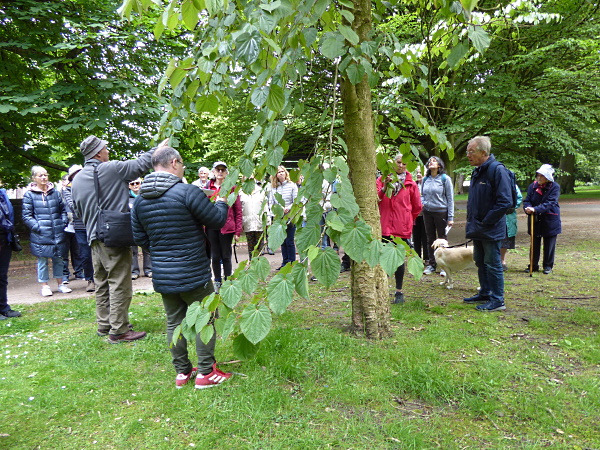
The rarest was a Spur-leaf Tetracentron sinense. It is a primitive deciduous tree with heart-shaped leaves on red stalks, each growing from a spur. Each leaf spur is supposed to have a single hanging catkin, but there were only a few on this tree.
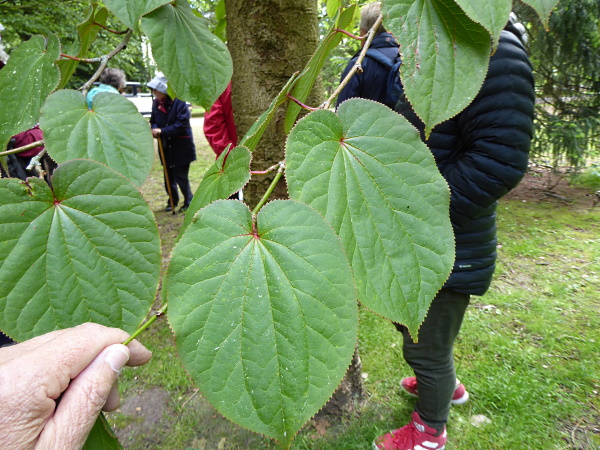
A tree that has been wrongly identified on several lists as a Plum-fruited Yew is really a Chinese Cow-tail Pine or Chinese Plum-yew, Cephalotaxus fortunei, looking just like a droopy Yew. Part of the confusion is because taxonomists have been arguing about where to classify it for many years. It is in the Yew group (not a Pine at all), and is next to the path behind ( = north) of the Allerton Oak.
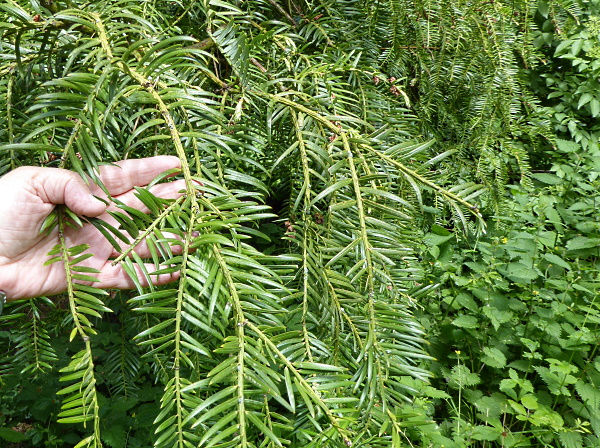
In the Japanese Garden is a Japanese Umbrella Pine Sciadopitys verticillata, not a true pine at all, but a “fossil tree” known from 230 million years ago. This one appears to have a nest of a Crow or Magpie near the top of it.
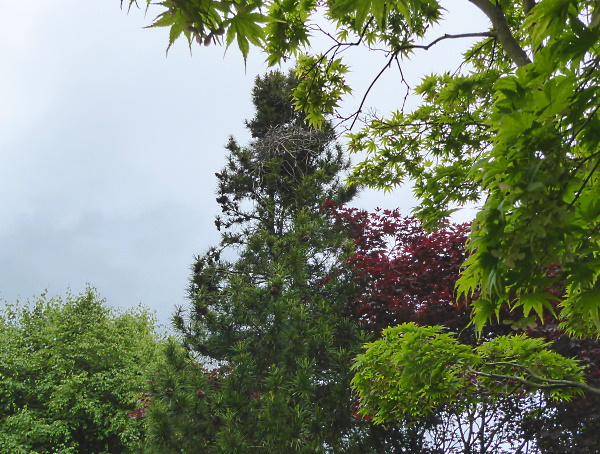
The fourth tree new to me was a Maritime Pine Pinus pinaster. It leans over the Rhododendron walk in a particularly shady spot, not good to photograph, but I picked up two squirrel-chewed cones which are clearly longer than those of Scots Pines.
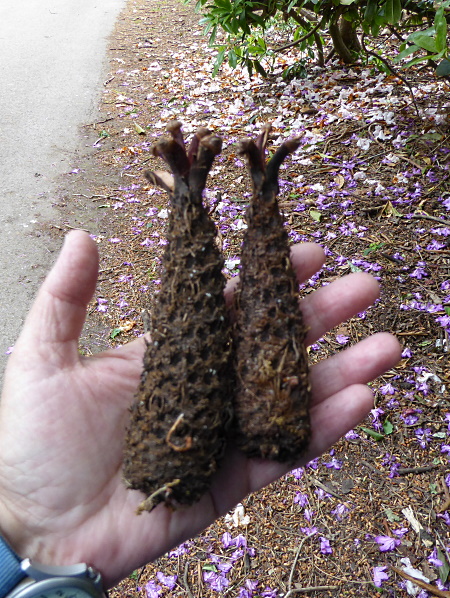
As for the three surprises, one was a Sweet Chestnut with white-edged leaves (variety ‘Albomarginata’) which I knew I had seen before but could never have found again. Now I know it is opposite the Rockery. In the shady area above the Rockery is a Large-leaved Lime. The best discovery was a young Aspen near the Text Garden, opposite the Handkerchief Tree: the only other one I knew in Merseyside was in Pickering’s Pasture.
The day had a further treat in store, as some of the Friends offered a walk around the unfinished Nature Reserve to anyone who was interested. Yes please! They unlocked the gate and several of us had a tour. About half of it is a stubborn Bramble and Nettle patch, with a path around the perimeter. (On the left on the picture below). It grows very vigorously from perennial roots, and is too big to dig out. They don’t want to treat it with strong herbicides, of course, so their only option is to cut it back from time to time.
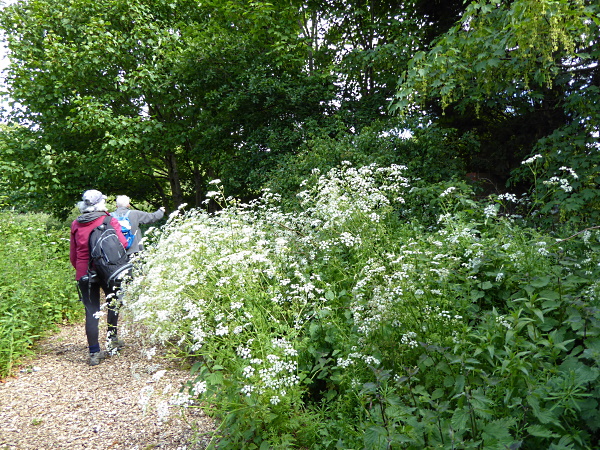
The other half is a wildflower meadow, now in its second year and starting to look lovely. They could open the reserve any time, but there is a problem with insurance which they are working to solve. But the waysides are graced with Foxgloves, Red Campion and Viper’s Bugloss, which was attracting bees already.
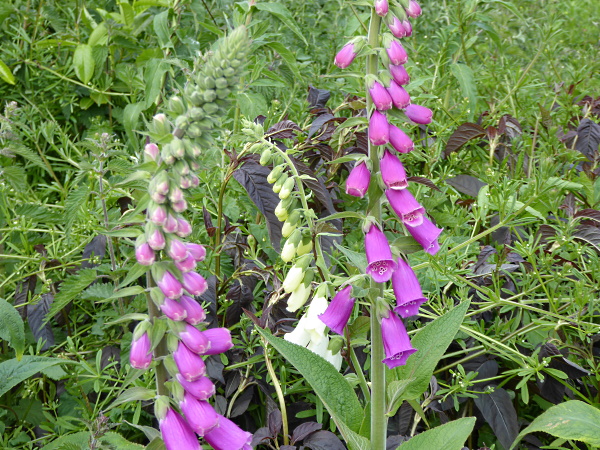
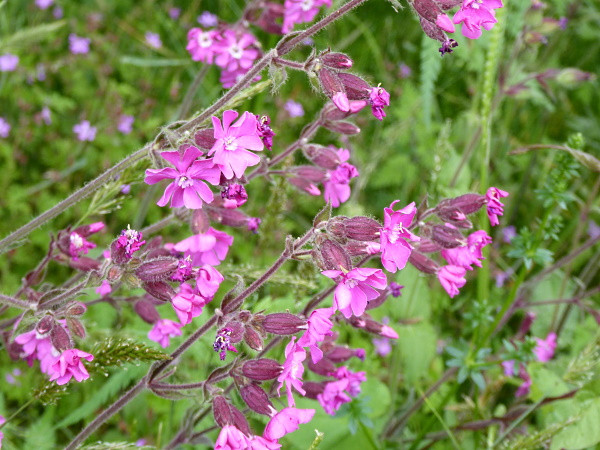
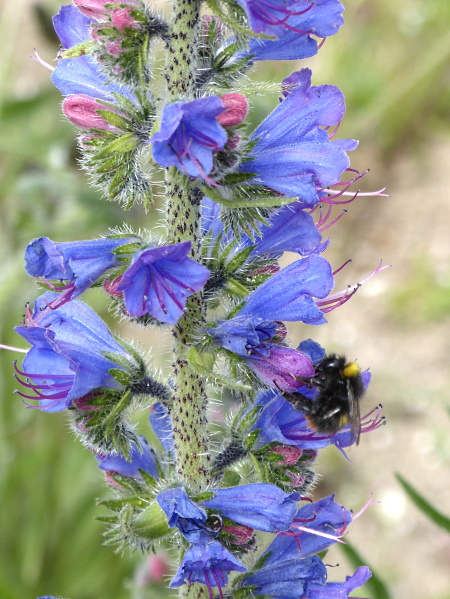
For the record, here are the 46 trees spotted on the walk.
Turkey Oak Quercus serris
Tulip Tree Liriodendron tulipfera
Coast Redwood Sequoia sempervirens
Holm Oak Quercus ilex
Yellow Buckeye Aesculus flava
Ginkgo Ginkgo biloba
Lucombe Oak Quercus x hispanica ‘Lucombeana’
Fern-leaved Beech Fagus sylvatica ‘Asplenifolia’
Sweet Chestnut Castanea sativa ‘Albomarginata’
Deodar Cedar Cedrus deodara
Swamp Cypress Taxodium distichum
Paperbark Maple Acer griseum
Manna Ash Fraxinus ornus
Red Horse Chestnut Aesculus x carnea
Italian Alder Alnus cordata
Dawn Redwood Metasequoia glyptostroboides
Broad-leaved (Large-leaved) Lime Tilia platyphyllos
Bhutan Pine Pinus wallichiana
Chinese Cow-tail Pine Cephalotaxus fortunei
Spur-leaf Tetracentron sinense
Scots Pine Pinus sylvestris
Sessile Oak (the Allerton Oak) Quercus petraea
Sweetgum Liquidambar styraciflua
Fulham Oak Quercusx hispanica ‘Fulhamensis’
Pride of India / Golden rain Koelreuteria paniculata
False Acacia / Black Locust Robinia pseudoacacia
Red Oak Quercus rubra
Sugar Maple Acer saccharinum
Handkerchief Tree Davidia involucrata
Common Walnut Juglans regia
Jacquemonti’s Birch / Himalayan Birch Betula utilis ‘Jacquemontii’
Table Dogwood variety Cornus controversa ‘Variegata’
Japanese Umbrella Pine Sciadopitys verticillata
Cornelian Cherry Cornus mas
Chinese Dogwood Cornus kousa
Sycamore Acer pseudoplatanus ‘Brillaintissimum’
Monkey puzzle Araucaria araucana
American Lime / American Basswood Tilia americana
Maritime Pine Pinus pinaster
Wellingtonia Sequoiadendron giganteum
Hornbeam Carpinus betulus
Aspen Populus tremula
Corkscrew Hazel Corylus avellana ‘Contorta’
Judas Tree Cercis siliquastrum
Pecan nut Carya illinoinensis
Dombey’s Southern Beech Nothofagus dombeyi
